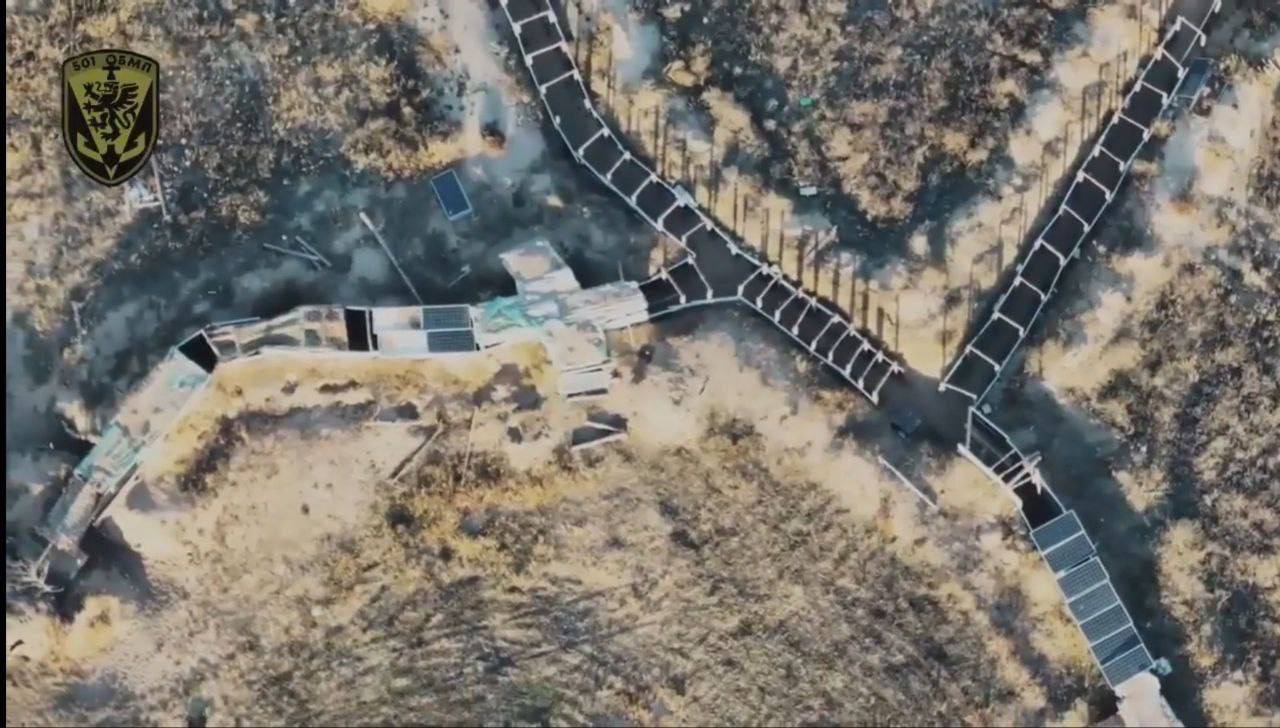After tanks, armored fighting vehicles, and artillery guns, Russian trenches have also begun sporting ‘cope cages’ to protect themselves from kamikaze drones. This is in response to an emerging tactic of using first-person view (FPV) loitering munitions even for anti-infantry use.
Small units of soldiers in bunkers and defensive lines are hit solely with the UAVs while overhead drones direct the strikes. This lessens the employment of own troops in close-quarter battles that might lead to casualties.
In some cases, the civilian-commercial drones could also be slung with small explosives that are dropped on soldiers, trenches, or bunkers on the ground – besides fast-flying unmanned aerial vehicles (UAV) retrofitted with front-armed warheads.
Drones In Trench Warfare, Anti-Infantry Use
Several videos by both sides show soldiers being surprised by drone strikes and bombing while either defending their own or attacking the opponent’s positions. If not instant death, the explosions amid a group of soldiers simultaneously injure three to four men, degrading that unit’s fighting capability.
But with the brief lull in Ukrainian access to drones between September and November – either because of losses to Russian anti-aircraft, electronic warfare, or interruptions in supply from the West – Russia intensified the use of FPV kamikaze drones in hitting Ukrainian defenses and bunkers. Several videos showed multiple UAVs deftly flying into enclosed and tricky ground positions.

It is not clear if Kyiv has now replenished its drone stocks. But the Russian tactic of now covering their trench lines and bunkers with overhead protection implies it is expecting such attacks after learning that Ukraine now has a fresh supply.
Russian Trenches Covered With Cages
“Cope cages” (also jokingly called “emotional support cages”) were the iron, steel, and metal protections spotted atop the turrets of Russian tanks earlier in the war to protect themselves from the ‘top attack’ javelin ATGMs. It was ridiculed as an exercise in futility since the rocket-powered Javelins quickly broke through the cages and destroyed the tanks.
However, subsequently, in the war, with the introduction of Russian loitering munitions like the Lancet that destroyed a majority of Ukraine’s Western-origin artillery, even Kyiv’s howitzer and field gun units adopted the practice, which had little success. Even Israel installed such cages atop their own Merkava tanks at the outbreak of the war with Hamas.
Russian Telegram channel ‘Milinfolive’ posted a picture of a small network of branched-out trench lines, where some segments are covered with frames, while other parts have clear and visible solid roofs. Milinfolive said the picture was taken by Ukrainian drones themselves.
“The enemy is posting footage of our trenches, equipped with frames and ceilings to protect against FPV drones and drops. Of course, such simple structures will not protect against a direct hit from a warhead. Still, they perform a straightforward function – they visually hide the movement of fighters along the trenches from the view from above, thereby preventing targeted strikes,” it said.
Complicates Ukraine’s Attacks on Russian Trenches
It is not known to which part of occupied Ukraine, where Russia has built extensive multilayered defenses, the photo belongs. It is also unclear if such enhancements have been throughout the defense lines or only in certain areas where Russian trench lines face persistent Ukrainian infantry strikes.
Ukrainian UAV strikes on trenches would only be conducted in two conditions. One is when its infantry runs probing attacks with small, heavily armed teams after breaking through the anti-tank ditches, minefields, and “dragon’s teeth” obstacles. Such raids would be coordinated with overhead drone strikes on Russian bunkers to take the pressure off its infantry.
Secondly, Ukrainian anti-bunker, trench line drone attacks are acting independently of other combined arms assaults on Russian defenses, aimed at generally degrading its manpower. This might force Ukrainian infantry or special forces to come in close contact with Russian soldiers, which entails heavy and bloody attritional fighting.
- The author can be reached at satamp@gmail.com
- Follow EurAsian Times on Google News